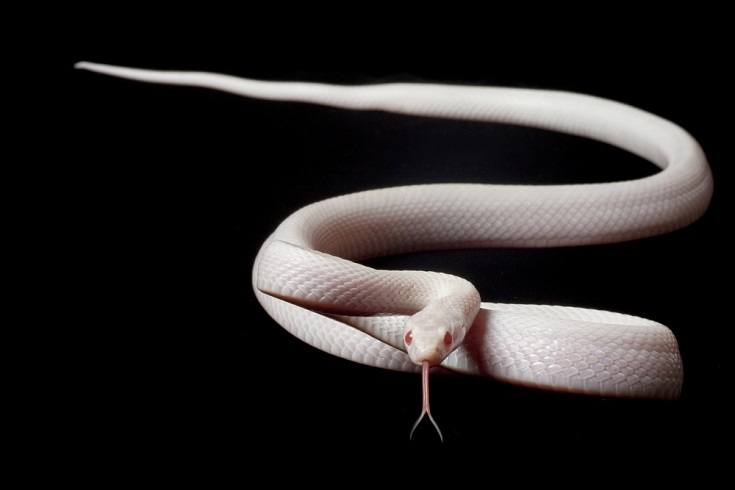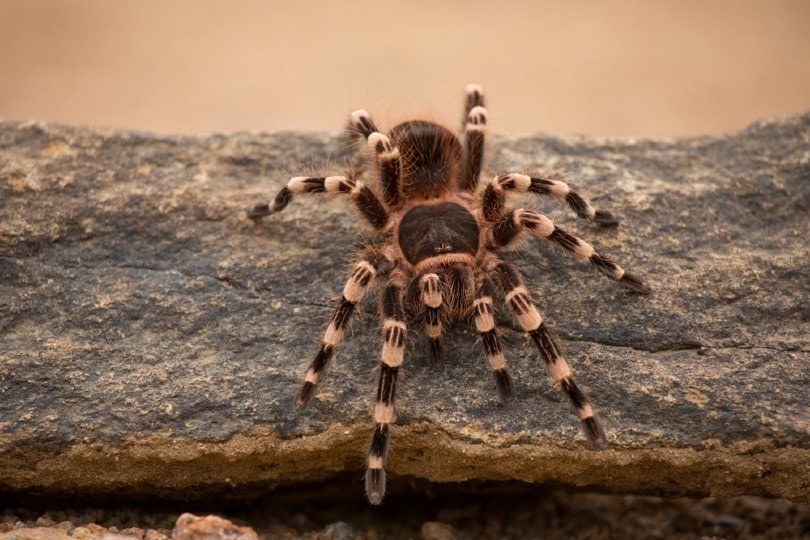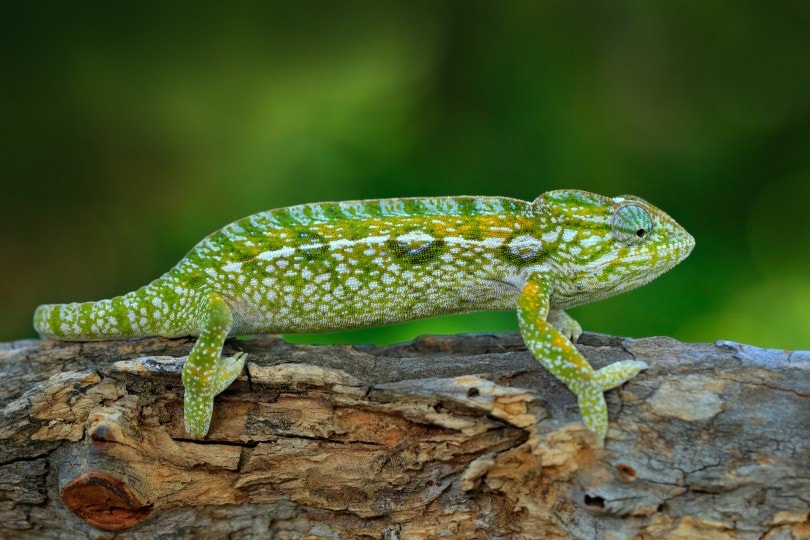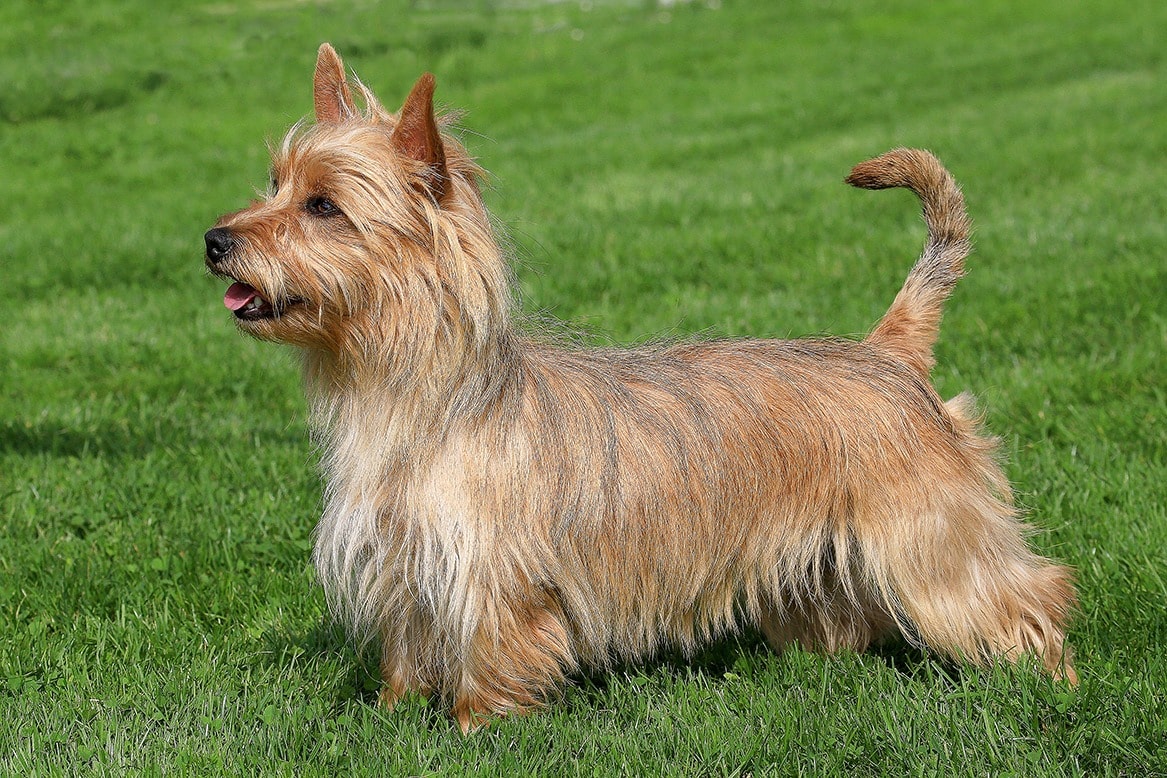Click to Skip Ahead
The blizzard corn snake is a type of corn snake that has been popularized due to its bright white skin. Originally from the United States, this breed of snake is now also found in other countries such as China and Australia.
They are bred for their color and make great pets for anyone interested in owning one!
This article will discuss some facts about the blizzard corn snake, including how they behave under different circumstances (as pets or living outside), what kind of care they need to thrive, and more!

Quick Facts About Blizzard Corn Snakes
| Species Name: | P. guttatus |
| Common Name: | Corn snake |
| Care Level: | Beginner |
| Lifespan: | 20-30 years |
| Adult Size: | 3-5 feet |
| Diet: | Small rodents |
| Minimum Tank Size: | 20 gallons |
| Temperature & Humidity: | Temperature: 75°F-85°F Humidity: 40-50% |
Do Blizzard Corn Snakes Make Good Pets?
In general, corn snakes make great pets because they are very clean and easy to take care of. In addition, they are a great choice for beginners because they are not as active.
In general, their temperament is a lot more friendly than other types of snakes. They do not have any venom or poison, so their bites are harmless to humans. You should handle blizzard corn snakes with care to avoid injury, but they typically do not bite.
On top of being an angel, this snake is simply beautiful to look at. You’re sure to leave a mark on the visitors that come to your home once they see your snake.
Appearance
The blizzard corn snake is a variation of a regular corn snake. The difference is that the blizzard corn snake has a white or cream-colored body. Also, unlike most other types of corn snakes, this type usually has dark black spots down its back in rows.

How to Take Care of Blizzard Corn Snakes
Caring for a corn snake is fairly easy, even for beginners. Here are some key things you need to know to provide your pet with the best living conditions possible.
Habitat, Tank Conditions, & Setup
Tank
Your corn snake’s tank should be at least a 20-gallon tank with a secure screen top. Make sure the lid of your tank is tight-fitting so that it cannot escape.
It is important to ensure in all areas where there are plants or other decorations, keep these items away from the heat and light sources to avoid overheating your pet.
The tank should be set up with a dry side and a humid side, allowing the corn snake to access both warm and cool areas to regulate its temperature.
To decorate the tank, make sure to include a hide box, climbing structures, and branches. The tank should also have fresh water available at all times, along with food items, which we’ll explore below.
Lighting
Corn snakes usually live in environments that have sunlight. You’ll probably want to add a light so you can see your beautiful snake better, so we recommend going with a fluorescent lightbulb or a desk lamp. They also require a heat lamp to help maintain their body temperature.
Heating (Temperature & Humidity)
Snakes are reptiles, meaning they are cold-blooded and need heat to stay warm. To keep the snake happy and healthy, we recommend you provide a heat source on both sides of the tank to make sure it can regulate its temperature well. The best way is with an under-tank heater that keeps one end of the cage at around 78 degrees Fahrenheit and the other end at around 85 degrees Fahrenheit.
They also require between 40 and 60% humidity to help them stay hydrated and support their respiratory system and shedding. You can provide humidity for your snake by providing a water dish or having a misting system.
Substrate
Choosing the right substrate is very important because these guys need to get a good grip. The best type of substrate is tree bark because it helps maintain humidity. Keep in mind that snakes love burrowing and hiding, so you’ll need a substrate depth of at least 2 inches.
| Tank Recommendations | |
| Tank Type: | 20-gallon glass vivarium |
| Lighting: | Gentle lighting |
| Heating: | Heating pad/tape on the bottom of the enclosure |
| Best Substrate: | Tree bark |

Feeding Your Blizzard Corn Snakes
Blizzard corn snakes have the same basic feeding needs as regular corn snakes. This means they need a diet of rodents. You can feed them either live mice or pre-killed, but you need to make sure they are small enough for the snake to swallow.
Corn snakes do not need to eat often, so you can feed them every couple of weeks. They are not picky eaters and will accept a wide variety of food, including rodents and birds.
Be sure to provide a water dish with fresh, clean water at all times! Snakes need to drink too!
| Diet Summary | |
| Rodents | 95% of diet |
| Insects | 4% of diet |
| Birds | 1% of diet |
Keeping Your Blizzard Corn Snakes Healthy
There are a few things you can do to keep your corn snake healthy. First, make sure to keep the temperature in their habitat between 72-81 degrees. You should also provide a heat lamp as needed.
Also, do not forget to feed your corn snake, and likewise, do not over-feed it. Feeding plays a great role in your pet’s overall health.
You should also make sure your pet snake is mentally healthy by providing it with a variety of different items, like branches, leaves, rocks, etc.
Common Health Issues
There are a few common health issues you should look out for, such as respiratory infections, dehydration from lack of water intake, and mental distress due to an improper enclosure. It is recommended to regularly monitor your snake’s skin and behavior for any changes and report them to your veterinarian when appropriate.

Lifespan
Corn snakes are found in the wild, where they are prey to many hunters. However, it is likely that you’ll mainly find a blizzard corn snake from a breeder.
It is estimated that corn snakes live from 6-10 years in the wild. As pets, however, it is a different story. Blizzard corn snakes often live to 15-20 years old, and sometimes more!
Breeding
If you’re interested in breeding corn snakes, you’ll be happy to know that blizzard corn snakes are very easy to breed. Breeding season typically begins in March, and the eggs are laid in the summertime.
To help your female corn snake during the process, make sure you provide her with a nest box that is moist. She needs a space where she will feel safe and comfortable. In the end, you’ll have 10-30 eggs that you’ll need to incubate.
When the eggs are ready, they will hatch in about 60 days! If any of them don’t seem like they’re hatching after a week or two, it’s best to discard them.
Are Blizzard Corn Snakes Friendly? Our Handling Advice
Blizzard corn snakes are known for their docile nature, which makes them great pets. We recommend that you handle your snake at least once every two weeks to keep him relaxed and well cared for.
You should feed the corn snake in front so they can track the prey if need be, but don’t try to touch or pick up the corn snake when feeding time is over! It will become defensive and could bite as a result.
Bites from blizzard corn snakes are not venomous and typically only cause minor pain that will last about three days. But with some human species (like young children), there’s always an increased risk of infection because we do not have enough antibodies in our bodies yet against these types of bacteria.
Shedding & Brumation: What to Expect
Blizzard corn snakes shed their skins periodically, which happens about once a month. During this time, you’ll see the corn snake shedding its skin in small pieces at first, and then all of a sudden, they will shed quickly for a few days before leaving behind a completely new-looking body.
Blizzard corn snakes typically brumate (hibernate) during the winter months from November to February, but not always! It depends on where he lives or if he has reached maturity yet.
Blizzard corn snakes can have different schedules as adults than when they were juveniles because there is no set age range where these animals go into hibernation mode, unlike many other types of reptiles.

How Much Do Blizzard Corn Snakes Cost?
Corn snakes are generally very affordable pets. Blizzard corn snakes may be a little bit more expensive due to their rarity. You can adopt one for the average price of $100.
Once you have your snake, don’t forget its terrarium, lights, a water dish, and branches/substrate. All in all, you’re looking at about $300.
Care Guide Summary
- Docile nature
- Inquisitive and exploratory
- Harmless bites
- Susceptible to disease
- Needs time to adjust to a new environment
- More expensive than regular corn snakes

Final Thoughts
Corn snakes are a great pet for anyone willing to invest time and effort. They’re not difficult animals, but they do require some special considerations for their care.
Be sure you know what type of environment your snake needs to feel safe and have an escape route out if necessary, before deciding whether or not these reptiles will make good pets for you!
See Also:
Featured Image Credit: fivespots, Shutterstock










